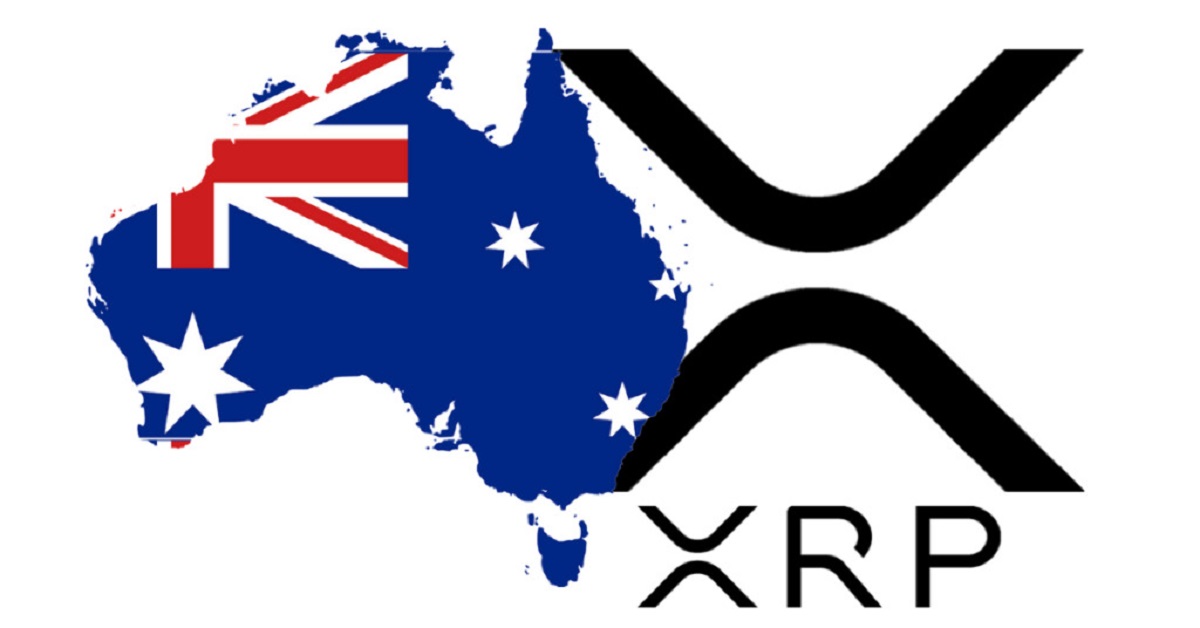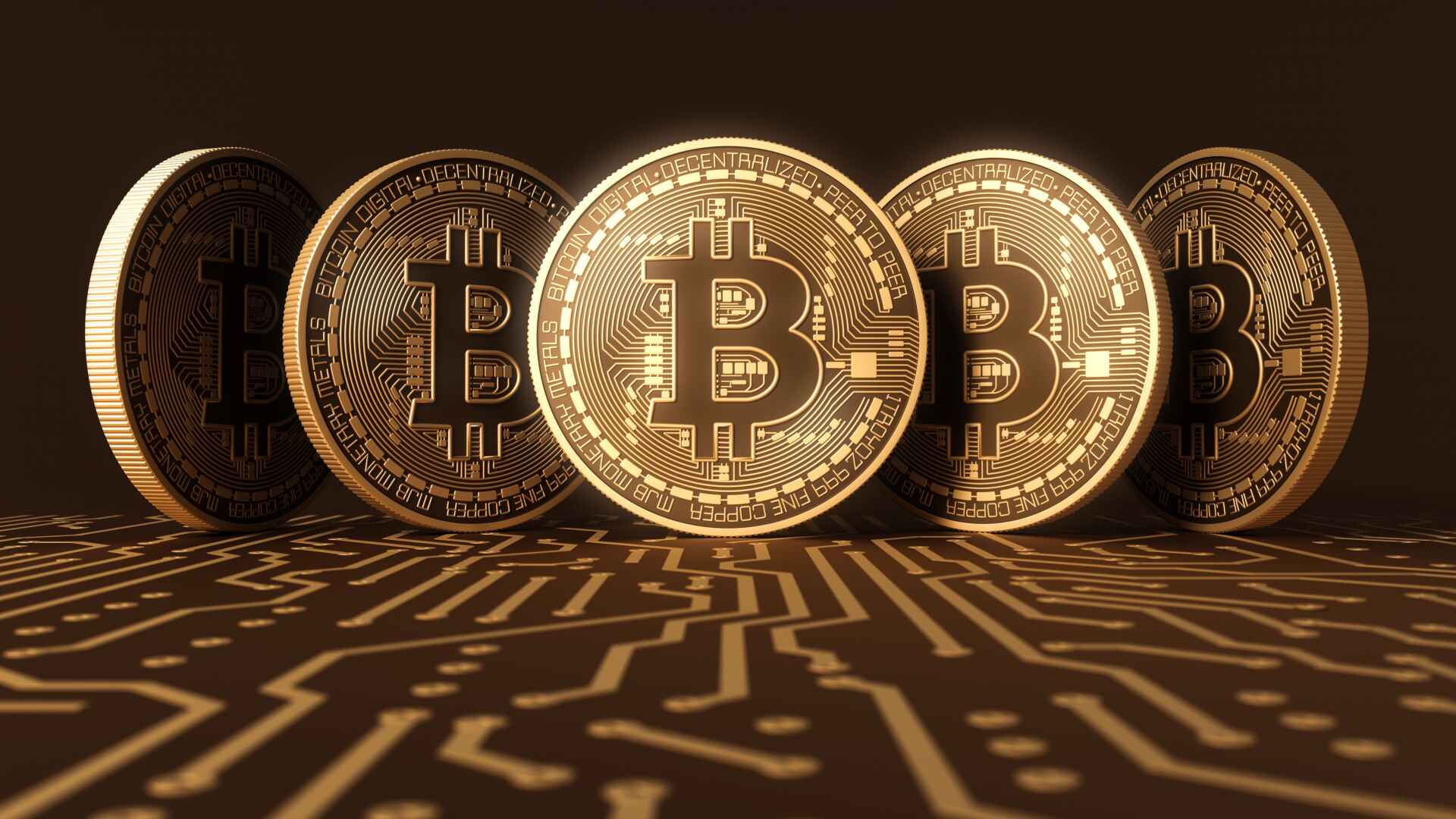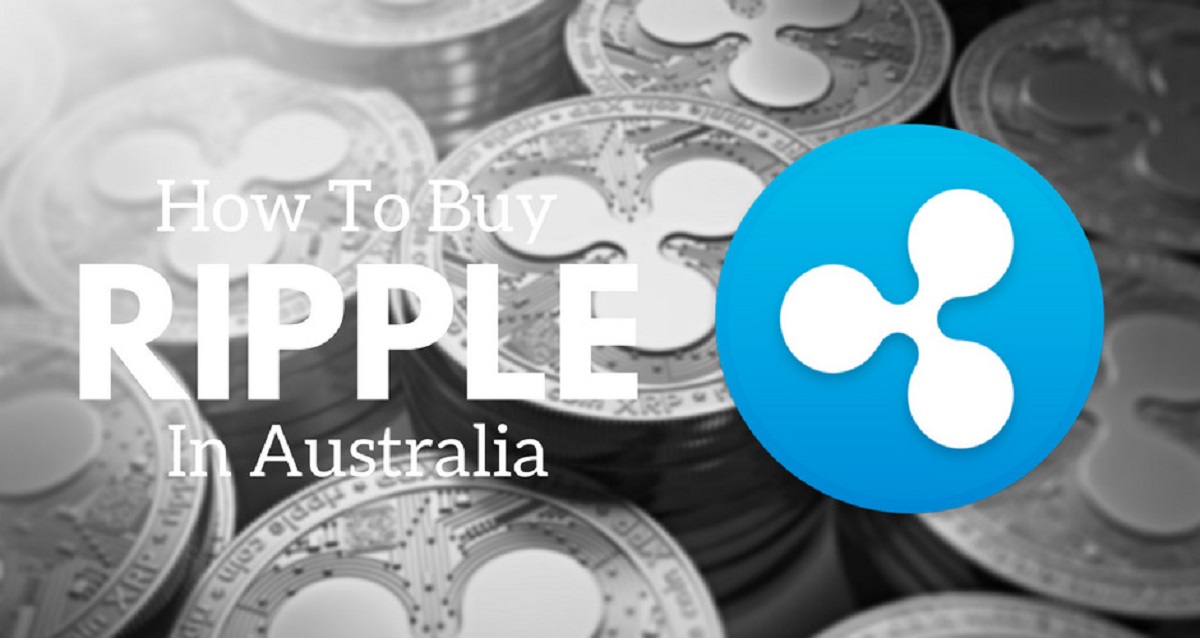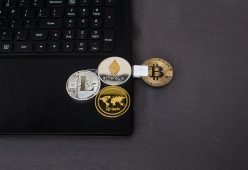Introduction
Welcome to the world of Ethereum, where digital currency meets decentralized computing. In this article, we will explore how to buy Ethereum in Australia, one of the fastest-growing cryptocurrency markets in the world. Whether you are a seasoned investor or a curious beginner, this guide will walk you through the process of buying Ethereum and help you navigate the cryptocurrency landscape.
But first, let’s understand what Ethereum is. Ethereum is not just a digital currency, like Bitcoin, but also a platform that enables the development of decentralized applications (DApps). It was created by Vitalik Buterin in 2015 and has gained significant traction in the financial and tech sectors due to its innovative features.
With Ethereum, you have the opportunity to invest in a decentralized future that can revolutionize industries such as finance, supply chain management, and even gaming. But why should you consider buying Ethereum in the first place?
One of the key reasons to buy Ethereum is its potential for growth. Over the years, Ethereum has seen a substantial increase in value, making it an attractive investment option. Its utility and versatility have attracted the attention of investors, developers, and enterprises worldwide, leading to a surge in demand.
Moreover, Ethereum offers more than just a digital currency. The platform provides a robust infrastructure for building decentralized applications, which opens up a world of opportunities for developers and entrepreneurs. By buying Ethereum, you become a part of this ecosystem and can potentially benefit from its future growth.
Now that you understand the significance of Ethereum, let’s delve into the process of buying it in Australia. The first step is to choose a cryptocurrency exchange that operates in Australia and allows you to buy Ethereum with Australian dollars (AUD). There are several reputable exchanges available, each with its own set of features and fees.
What is Ethereum
Ethereum is a decentralized, open-source blockchain platform that not only enables the creation and transfer of digital currency (Ether) but also allows for the development of smart contracts and decentralized applications (DApps). It was first proposed by Vitalik Buterin in late 2013 and launched in 2015.
Unlike Bitcoin, which primarily acts as digital money, Ethereum provides a programmable platform on which developers can build various decentralized applications. Ethereum’s blockchain technology enables smart contracts, which are self-executing contracts with predefined rules and conditions.
The native cryptocurrency of the Ethereum blockchain is Ether (ETH), which serves as both a medium of exchange and a store of value within the Ethereum ecosystem. ETH is used to pay for transaction fees and computational services on the network. It is also traded on various cryptocurrency exchanges.
One of the most revolutionary aspects of Ethereum is its ability to support decentralized applications. These applications, known as DApps, are essentially software programs that run on the Ethereum blockchain. They are built using Ethereum’s native programming language, Solidity.
Smart contracts play a vital role in DApp development. These contracts are self-executing and self-enforcing agreements that automatically execute when predefined conditions are met. By leveraging smart contracts, developers can create trustless and decentralized applications, eliminating the need for intermediaries.
Ethereum offers a wide range of use cases. One of the most prominent areas is decentralized finance (DeFi), which encompasses various financial applications built on the Ethereum blockchain. These include lending platforms, decentralized exchanges, and yield farming protocols.
Another notable use case is non-fungible tokens (NFTs). NFTs are unique digital assets that can represent ownership of artwork, collectibles, virtual real estate, and more. Ethereum’s support for smart contracts has made it the preferred platform for NFT creation and trading.
In summary, Ethereum is a decentralized blockchain platform that goes beyond being a digital currency. With its ability to support smart contracts and decentralized applications, Ethereum has opened up a world of possibilities for developers, enterprises, and users. Its programmability and flexibility have made it a prominent player in the blockchain ecosystem, driving innovation and transforming industries across the globe.
Why Buy Ethereum
There are several compelling reasons why you should consider buying Ethereum. Let’s explore some of the key factors that make Ethereum an attractive investment:
- Potential for Growth: Ethereum has been one of the best-performing cryptocurrencies in terms of price appreciation. Over the years, it has experienced significant growth, surpassing its previous all-time highs. Its wide adoption, technical advancements, and expanding ecosystem contribute to its potential for future growth.
- Decentralized Applications: Ethereum’s blockchain platform allows for the development of decentralized applications (DApps). By investing in Ethereum, you become part of a dynamic ecosystem that supports innovative applications across various industries such as finance, gaming, supply chain management, and more. As DApps gain popularity and mainstream adoption, the demand for Ethereum is expected to rise.
- Support for Smart Contracts: Ethereum introduced the concept of smart contracts, which are programmable, self-executing contracts with predefined conditions. Smart contracts enable automation, transparency, and trust in various business processes. By investing in Ethereum, you gain access to a platform that revolutionizes traditional contract negotiation and execution.
- Decentralized Finance (DeFi): Ethereum has become the go-to platform for decentralized finance applications. DeFi encompasses a wide range of financial services, including lending, borrowing, yield farming, and decentralized exchanges. By buying Ethereum, you can participate in this rapidly growing sector and potentially earn passive income through various DeFi protocols.
- Non-Fungible Tokens (NFTs): Ethereum is the preferred blockchain for creating and trading non-fungible tokens (NFTs). NFTs represent unique digital assets, such as artwork, collectibles, virtual real estate, and more. Buying Ethereum allows you to engage in the vibrant NFT market and potentially invest in valuable digital assets.
- Diversification: If you already have investments in other cryptocurrencies, such as Bitcoin, buying Ethereum can help diversify your portfolio. Ethereum has its unique features and advantages, and adding it to your cryptocurrency holdings can provide a more balanced and diversified investment strategy.
These factors make Ethereum an enticing investment opportunity. However, it’s important to note that cryptocurrency investments come with inherent risks. The cryptocurrency market can be volatile, and it’s crucial to conduct thorough research, assess your risk tolerance, and make informed investment decisions.
By investing in Ethereum, you participate in a revolutionary blockchain platform that has the potential to shape the future of multiple industries. Whether you are interested in its investment potential, its support for decentralized applications, or its role in DeFi and NFTs, buying Ethereum can open up new opportunities in the evolving digital landscape.
Choosing a Cryptocurrency Exchange in Australia
When it comes to buying Ethereum in Australia, choosing the right cryptocurrency exchange is crucial. An exchange serves as a platform to facilitate the buying, selling, and trading of cryptocurrencies. Here are some factors to consider when selecting a cryptocurrency exchange:
- Reputation and Security: Look for exchanges with a solid reputation and a track record of maintaining the security of user funds. Research user reviews, check if the exchange has experienced any security breaches in the past, and see if it adheres to industry best practices for safeguarding customer assets.
- Supported Cryptocurrencies: Ensure that the exchange supports Ethereum (ETH) trading and offers a wide range of other cryptocurrencies as well. This will allow you to diversify your portfolio and explore other potential investment opportunities.
- Liquidity: Liquidity refers to the ease of buying or selling a cryptocurrency without significantly impacting its price. Choose an exchange that has sufficient trading volume and liquidity for Ethereum. Higher liquidity can help ensure faster and smoother transactions.
- Trading Fees: Exchanges charge fees for each transaction you make. Take into account the fee structure of different exchanges and consider whether they align with your trading strategy and investment budget. Look for exchanges with competitive fees without compromising on security and reliability.
- User Interface and Experience: A user-friendly interface and intuitive trading experience can make a significant difference in your cryptocurrency journey. Look for exchanges with a well-designed and easy-to-navigate interface that suits your needs and preferences.
- Payment Methods: Check the supported payment methods on the exchange. Ideally, you would want an exchange that accepts bank transfers or credit/debit card payments in Australian dollars (AUD). This ensures a seamless process of adding funds to your account and buying Ethereum.
- Customer Support: Choose an exchange that offers reliable customer support. Look for exchanges with responsive customer service channels, such as live chat, email, or phone support. Good customer support can be invaluable if you encounter any issues or have questions during the buying process.
Some popular cryptocurrency exchanges in Australia that you can consider are Independent Reserve, CoinSpot, Swyftx, and BTC Markets. However, it’s essential to conduct your own research and compare different exchanges based on the factors mentioned above.
Remember, selecting the right cryptocurrency exchange is crucial to ensure a smooth and secure buying experience. Take your time, assess the options available, and choose the exchange that best meets your requirements and aligns with your investment goals.
Setting up an Account on an Exchange
Once you have chosen a cryptocurrency exchange in Australia, the next step is to set up an account. Here is a step-by-step guide on how to create an account on most cryptocurrency exchanges:
- Visit the Exchange’s Website: Go to the website of the chosen cryptocurrency exchange and click on the “Sign Up” or “Register” button to begin the account creation process.
- Provide Your Personal Information: Fill in the required personal information, such as your name, email address, and password. Make sure to choose a strong password to protect your account.
- Verify Your Email: After providing your email address, you will receive a verification email from the exchange. Click on the verification link to confirm your email address.
- Set Up Two-Factor Authentication (2FA): Enable two-factor authentication for added security. This usually involves linking your exchange account to a 2FA app, such as Google Authenticator or Authy, and following the setup instructions.
- Agree to Terms and Conditions: Read and agree to the terms and conditions of the cryptocurrency exchange. It is essential to understand the rules and regulations governing the use of the platform.
- Complete Identity Verification: Most reputable exchanges require users to complete identity verification before they can start trading. This process is known as Know Your Customer (KYC) verification and typically involves providing a copy of your identification documents, such as a passport or driver’s license, and sometimes a proof of address.
- Submit Verification Documents: Follow the instructions provided by the exchange to submit your verification documents securely. It may take some time for the exchange to review and approve your documents.
- Wait for Account Approval: After submitting your verification documents, wait for the exchange to review and approve your account. This process can take anywhere from a few minutes to a few days, depending on the exchange’s verification process and workload.
Once your account is approved, you are ready to start buying Ethereum. However, before you proceed, it is essential to familiarize yourself with the exchange’s interface, features, and security measures. Take some time to explore the platform’s functionalities, deposit options, and withdrawal methods. Additionally, note any deposit or withdrawal limits that may apply to your account.
Remember to keep your account credentials and personal information secure. Use strong and unique passwords, enable two-factor authentication, and be cautious of phishing attempts or suspicious links.
Setting up an account on a cryptocurrency exchange is the first step towards buying Ethereum. By following the instructions provided by the exchange and completing the necessary verification process, you can ensure a smooth onboarding experience and gain access to the platform’s features and trading options.
Verifying Your Identity and Security Measures
When it comes to buying and trading cryptocurrencies on a reputable exchange, verifying your identity is an essential step. This process, known as Know Your Customer (KYC) verification, helps maintain the security and integrity of the platform. Here’s what you need to know about verifying your identity and the security measures involved:
Identity Verification Process:
1. Providing Personal Information: When signing up for an account on a cryptocurrency exchange, you will usually be required to provide personal information such as your full name, date of birth, and address. Make sure to enter accurate details to avoid any issues during the verification process.
2. Submitting Identification Documents: To comply with regulatory requirements and prevent fraudulent activities, exchanges often require users to submit identification documents. This typically includes a government-issued ID, such as a passport or driver’s license, which serves to verify your identity.
3. Proof of Address: In addition to identification documents, some exchanges may request proof of address. This can be achieved by providing utility bills, bank statements, or government letters that display your name and address. Ensure that the documents are recent and match the information provided during registration.
4. Image Submission: You will be asked to upload clear and legible images or scans of the required documents. Follow the exchange’s guidelines regarding file formats, file size, and image quality. Double-check that the documents are fully visible, free from any obstructions, and not expired.
Security Measures:
1. Two-Factor Authentication (2FA): Enable 2FA to add an additional layer of security to your account. This involves linking your exchange account to a 2FA app on your smartphone, generating time-based authentication codes that are required to access your account.
2. Strong Passwords: Choose a unique and strong password for your exchange account. Avoid using commonly used passwords or personal information that can be easily guessed. Consider using a password manager to store and generate strong passwords.
3. Account Activity Monitoring: Regularly monitor your account activity for any unauthorized access or suspicious transactions. Set up email or SMS notifications for account login, withdrawals, or account changes. Report any suspicious activity to the exchange’s support team immediately.
4. Secure Communication: When communicating with customer support or exchanging sensitive information, ensure that you are using a secure channel. Check for a padlock icon in your browser to indicate a secure connection (HTTPS).
5. Keep Software Updated: Maintain the security and integrity of your devices by regularly updating your operating system, web browser, and anti-malware software. Use reputable security software to protect against malware, phishing attacks, and other online threats.
Remember, the verification process and security measures are in place to protect both you and the exchanges. It may take some time for the verification process to complete, so be patient. Follow the exchange’s guidelines and provide accurate information and valid identification documents.
By adhering to the identity verification process and implementing proper security measures, you can help ensure the safety of your funds and transactions on the cryptocurrency exchange.
Adding Funds to Your Account
Once you have set up your account and completed the identity verification process on the cryptocurrency exchange, it’s time to add funds to your account. Adding funds allows you to have a balance ready for purchasing Ethereum and other cryptocurrencies. Here’s how you can add funds to your account:
- Payment Methods: Check the available payment methods on the exchange. Most exchanges offer options such as bank transfers, credit/debit card payments, and sometimes even digital wallets or alternative payment methods. Choose the payment method that is convenient and secure for you.
- Linking Your Bank Account or Card: If you plan to use a bank transfer or link your credit/debit card, follow the exchange’s instructions to set up and link your desired payment method. This often involves providing relevant banking or card information securely.
- Deposit Function: Once your bank account or card is linked, navigate to the deposit page on the cryptocurrency exchange. Select the currency or cryptocurrency you want to deposit, which, in this case, would be Australian dollars (AUD).
- Deposit Amount: Enter the amount of funds you wish to deposit into your exchange account. Take note of any minimum or maximum deposit limits imposed by the exchange. It’s important to deposit an amount that you are comfortable using for trading.
- Review and Confirm: Before submitting the deposit request, review the details to ensure accuracy. Double-check the deposit amount, payment method, and any associated fees. Confirm the transaction and proceed to the next step.
- Follow the Instructions: The exchange will provide you with specific instructions on how to complete the deposit. This may involve providing a unique reference number or using a specific identification code to ensure the successful allocation of the funds to your account.
- Processing Time: The time it takes for your funds to appear in your exchange account can vary depending on the payment method and exchange. Bank transfers might take longer than credit/debit card transactions. Be patient and allow sufficient time for the funds to be processed and reflected in your account.
It’s important to note that some exchanges may charge fees or commissions for deposits. Familiarize yourself with the exchange’s fee structure to avoid any surprises.
Once the funds are successfully deposited into your account, you are ready to buy Ethereum. Take some time to familiarize yourself with the trading interface and the buying process offered by the exchange. Understand the order types, trading pairs, and other relevant features that will help you make informed investment decisions.
Remember to keep track of your account balance and manage your funds responsibly. Cryptocurrency trading can be volatile, so it’s essential to set a budget and invest only what you can afford to lose.
By following these steps to add funds to your account, you can ensure that you have a balance available for purchasing Ethereum and other cryptocurrencies on the exchange.
Placing an Order for Ethereum
Now that you have funds in your exchange account, it’s time to place an order to buy Ethereum. Placing an order involves specifying the amount of Ethereum you want to purchase and the price at which you are willing to buy it. Here’s how you can place an order for Ethereum:
- Navigate to the Trading Section: Locate the trading section on the cryptocurrency exchange’s website or app. This is where you can access the trading pairs and market options available.
- Select Ethereum Trading Pair: Look for the Ethereum (ETH) trading pair. In most cases, it will be paired with a base currency such as Australian dollars (AUD). Choose the ETH/AUD trading pair to trade Ethereum with your deposited funds.
- Choose the Type of Order: Exchanges typically offer different types of orders, including market orders and limit orders. A market order allows you to buy Ethereum at the current market price, while a limit order allows you to set a specific price at which you want to buy Ethereum. Select the appropriate order type for your trading strategy.
- Set the Order Details: If you choose a limit order, specify the price at which you want to buy Ethereum. If you opt for a market order, skip this step as the order will be executed at the current market price.
- Review and Confirm: Double-check the order details, including the order type, quantity of Ethereum you wish to purchase, and the total cost. Review any applicable fees or commissions. Confirm the order to proceed.
- Place the Order: Once you have confirmed the details, click on the “Place Order” or “Buy” button to submit your order. The exchange will process your order based on the specified terms.
- Monitor Your Order: After placing your order, monitor its progress in the exchange’s trading interface. You can usually find information on whether the order is pending, filled, or partially filled. It’s important to be patient, as the execution of the order may take some time depending on market conditions.
- Check Your Wallet Balance: Once your order is successfully executed, check your account balance. The purchased Ethereum should now be reflected in your exchange wallet. If you plan to hold Ethereum long-term, consider transferring it to a personal wallet for increased security.
It’s important to note that the cryptocurrency market can be highly volatile, and prices can fluctuate rapidly. Make sure to consider these fluctuations when placing your order and set reasonable expectations.
Additionally, it’s a good practice to stay updated on market news and trends to make informed decisions about buying and selling Ethereum. Keep an eye on price charts, technical analysis, and relevant news updates to stay on top of market movements.
By following these steps to place an order for Ethereum, you can successfully buy Ethereum on a cryptocurrency exchange and become a part of this thriving digital currency ecosystem.
Storing Your Ethereum Safely
After purchasing Ethereum, it’s crucial to store it securely to protect your investment. Storing Ethereum involves safeguarding your private keys, choosing the right type of wallet, and implementing additional security measures. Here are some steps to consider for safely storing your Ethereum:
- Choose a Secure Wallet: Select a reliable and secure wallet to store your Ethereum. There are various types of wallets available, including hardware wallets, software wallets, and online wallets.
- Hardware Wallets: Consider using a hardware wallet, such as Ledger or Trezor. These physical devices store your private keys offline, providing an extra layer of security by keeping your Ethereum away from potential online vulnerabilities.
- Software Wallets: Software wallets, also known as desktop or mobile wallets, are applications that you install on your computer or smartphone. Choose a widely trusted and reputable wallet with strong security features, such as MetaMask or MyEtherWallet.
- Online Wallets: Online wallets are web-based wallets that store your private keys on a remote server managed by a third-party provider. While convenient, they are generally considered less secure due to the reliance on the provider’s infrastructure. If you choose an online wallet, research the provider’s reputation and security practices.
- Back Up Your Wallet: No matter which type of wallet you choose, it is crucial to create a backup of your wallet’s recovery phrase or private key. Store this backup in a secure location that is separate from your wallet itself. In case of loss, theft, or hardware failure, the backup will allow you to recover and access your Ethereum.
- Keep Wallet Software Updated: Regularly update your wallet software to ensure that you have the latest security patches and bug fixes. Wallet providers often release updates to improve security and address vulnerabilities.
- Enable Two-Factor Authentication (2FA): If your software wallet or exchange account offers 2FA, enable this additional layer of security. 2FA protects your wallet or account by requiring a second verification step, such as a unique code generated by an authentication app on your smartphone.
- Be Cautious of Phishing Attempts: Be vigilant and cautious of phishing attempts that try to trick you into revealing your wallet credentials or private keys. Always ensure that you are accessing your wallet through the official website or app, and be wary of unsolicited emails or messages asking for your wallet information.
- Consider Cold Storage: For long-term storage of substantial amounts of Ethereum, consider cold storage options. Cold storage refers to storing your private keys offline, away from any online connections. This provides the highest level of security by eliminating the risk of online hacks or breaches.
- Diversify Storage Methods: It may be beneficial to diversify your storage methods by spreading your Ethereum across different wallets or storage devices. This way, if one method is compromised, your entire Ethereum holdings will not be at risk.
Remember, the security of your Ethereum ultimately rests in your hands. By following these steps and implementing proper security measures, you can greatly reduce the risk of unauthorized access or loss of your Ethereum investment.
It’s important to stay informed about the latest security practices and regularly review the security features and recommendations provided by your chosen wallet provider. Keeping your Ethereum safe and secure will give you peace of mind as you continue to engage in the exciting world of cryptocurrency.
Conclusion
Congratulations! You have reached the end of our guide on how to buy Ethereum in Australia. We have covered the essential steps, from understanding what Ethereum is to securely storing your purchased Ethereum. By now, you should have a good understanding of the process involved in buying Ethereum and how to navigate the cryptocurrency landscape.
As you venture into the world of cryptocurrency investment, remember to conduct thorough research, stay updated on market trends, and make informed decisions. Cryptocurrency trading can be volatile, so it’s important to set realistic expectations, diversify your investments, and never invest more than you can afford to lose.
Always prioritize security by choosing reputable cryptocurrency exchanges, verifying your identity, setting up two-factor authentication, and using secure wallets to store your Ethereum. Protecting your private keys and practicing safe online behavior will go a long way in safeguarding your crypto assets.
Ethereum presents a multitude of opportunities, from its growth potential to the development of decentralized applications and the exciting world of decentralized finance (DeFi) and non-fungible tokens (NFTs). As Ethereum continues to evolve and disrupt various industries, your investment in this innovative platform can offer long-term benefits.
Remember to stay informed about the latest updates and developments in the Ethereum ecosystem. Engage with the thriving community, join online forums, and participate in discussions to expand your knowledge and deepen your understanding of this dynamic technology.
We hope this guide has provided you with valuable insights and clear steps to start your journey of buying and investing in Ethereum. The cryptocurrency landscape is ever-changing, and staying informed and adaptable will be key to navigating this exciting and potentially lucrative market.
Wishing you success and fulfillment in your Ethereum investment journey!

























